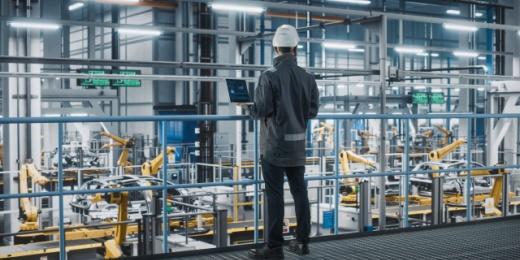What is Digital Transformation in Manufacturing?
Digital transformation in manufacturing refers to the integration of digital technologies such as Internet of Things (IoT), Artificial Intelligence (AI), big data analytics, and autonomous systems to improve efficiency in the manufacturing supply chain management and overall operation of a manufacturing business.
Benefits of Implementing Digital Transformation in Manufacturing
Implementing digital transformation brings numerous benefits to manufacturing businesses. Gason, one of Australia’s leading manufacturing companies for agricultural equipment, has utilized digital solutions to raise their game and keep up with the fast-paced technological advancements in the manufacturing space.
Apart from speeding up traditional processes and making way for growth and innovation, here are the top reasons to go digital in manufacturing:
Improved Operational Efficiency
Digital transformation enables manufacturers to streamline their operations and achieve higher levels of efficiency. By automating processes and integrating advanced technologies such as robotics and machine learning, repetitive tasks can be simplified. This reduces human error, bottlenecks in production, and significantly increases productivity.
Enhanced Quality Control
With digital tools, businesses can utilize real-time monitoring of production lines and equipment to immediately identify defects or deviations from quality standards. This allows production teams to take corrective actions promptly and address quality issues before products reach the customer.
Scale Your Enterprise Operations with Customizable Solutions
✓ Scale ✓ Data ✓ Security ✓ Integration ✓ Teams
Learn MorePredictive maintenance
Digital transformation empowers manufacturers to adopt predictive maintenance strategies instead of relying on reactive maintenance approaches.
For example, manufacturing facilities can utilize sensors and integrate them into advanced analytics. Manufacturers can predict equipment failures before they occur with the help of sensor monitoring systems. This step also enables proactive maintenance interventions to be scheduled at optimal times.
This not only reduces unplanned downtime and maintenance costs but also prolongs the lifespan of equipment in the facility.
Reduced Costs
By optimizing resource utilization with digital tools, manufacturers can achieve substantial savings in production costs.
Businesses can avoid costly breakdowns and repairs with well-maintained equipment. In addition, automating processes also reduces the need for manual labor while further increasing production efficiency.
Common Challenges in Adopting Digital Technology
When manufacturers are used to traditional, paper-based tools , switching to digital systems can have a learning curve. They may encounter obstacles that may slow down the implementation process, such as:
Workforce Skill Gap
One of the primary challenges of digital transformation is ensuring that the workforce has the necessary skills to adapt to new technologies and processes. Many manufacturing employees may lack expertise in areas such as data analysis, programming, and automation.
Bridging this skill gap through training programs and upskilling initiatives is important to ensure a smooth transition to digital technologies.
Integration Issues
Another challenge in digital tools is compatibility between different software platforms and hardware devices used. Some software programs may not be capable of integrating with other software due to their function limitations.
For this reason, manufacturers must carefully plan to minimize disruptions and ensure continuity during the transition.
Regulatory Compliance
Implementing digital transformation initiatives while ensuring compliance with regulatory requirements can be complex and time-consuming.
Manufacturers must carefully review the requirements of regulatory frameworks that apply to them and ensure that digital technologies adhere to applicable laws and standards.




